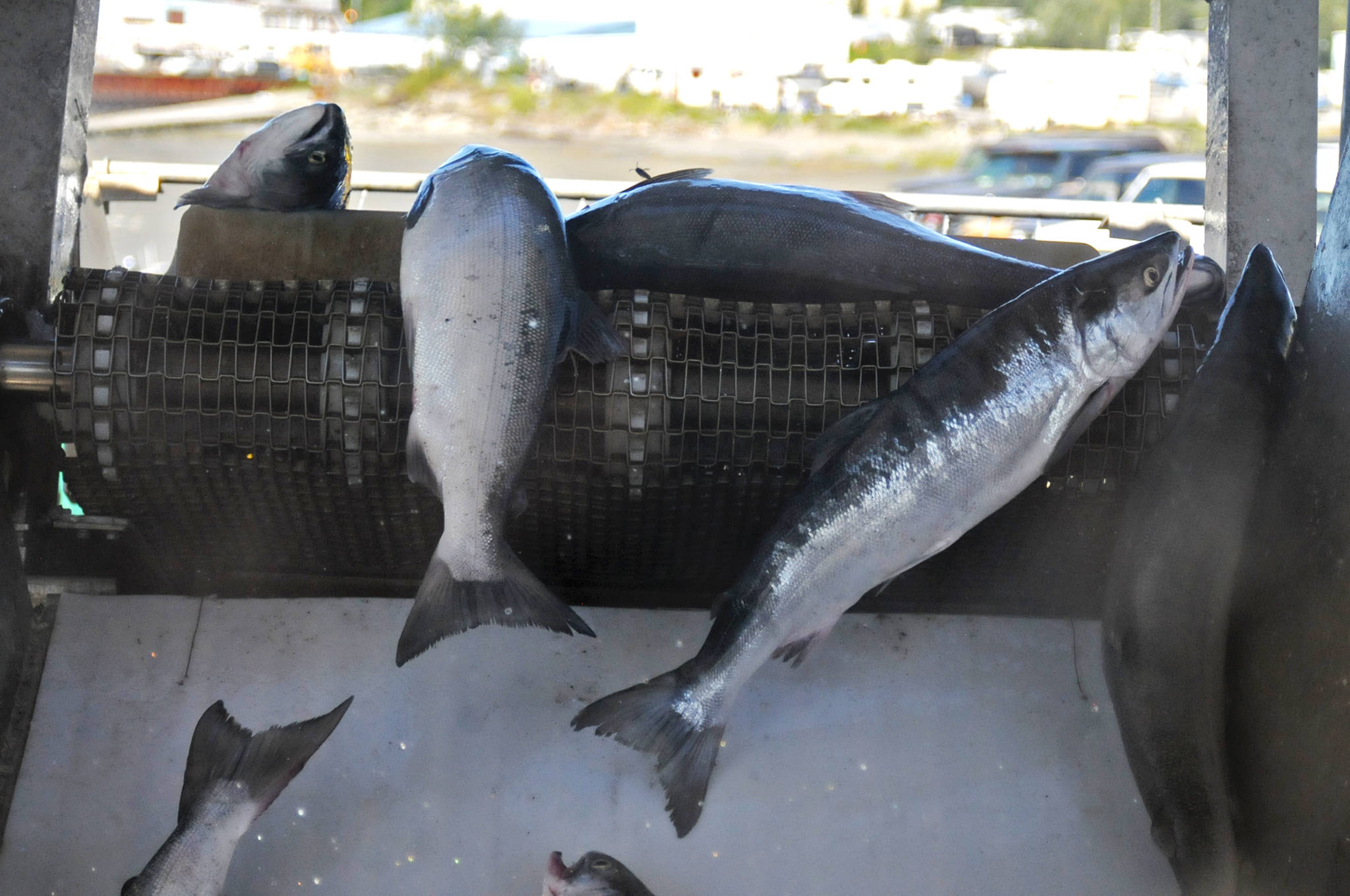More people worked in commercial salmon fishing in Southcentral Alaska in 2016 than in 2015, even as total catch declined.
Salmon harvesting jobs fell in all other regions of Alaska but grew slightly in the Southcentral area in 2016 — . Statewide, they fell about 6.4 percent, according to a report released Nov. 1 by the Alaska Department of Labor and Workforce Development.
Overall commercial fishing jobs fell about 5 percent between 2015 and 2016. Most of that decline was in salmon fisheries — groundfish harvesting jobs stayed relatively stable, as did jobs in halibut, herring, sablefish and shellfish harvesting, according to the report. Crab fisheries also lost jobs, partially in response to cuts in the harvest quotas for the 2016–2017 season — an average of 18.7 percent, or 107 jobs.
“This brought the fishery’s employment to its lowest level since 2009 and below the 10-year average,” the report states.
Most salmon fisheries in the state lost jobs in 2016. Southeast saw declines in employment in all of its fisheries, with the largest in salmon — after rising by 14 jobs in 2015, it fell by 52 jobs in 2016, according to the report. Bristol Bay lost about 133 salmon jobs, or 9.5 percent; the northern region, which doesn’t have many seafood harvesting jobs, lost 8 jobs, or 4.4 percent of its total seafood harvesting jobs; the Yukon Delta, which relies mostly on salmon harvesting, lost 55 salmon jobs, or 15.5 percent; and the Aleutians and Pribilof Islands lost 122 fishing jobs, or 7.8 percent, most of which was in crab harvestin.
Kodiak lost about 8.5 percent of its fishing jobs in 2016, again with most of the losses in salmon. The region shed about 14 percent of its salmon harvesting jobs, or 66 jobs, in 2016. Kodiak had an exceptionally poor year in 2016, with pink salmon coming in disastrously below expectations, leading to a disaster declaration in January 2017 by the U.S. Department of Commerce.
The poor pink salmon harvest also affected Prince William Sound and Lower Cook Inlet, both of which are included in the Southcentral region, along with Upper Cook Inlet. Southcentral has the second most commercial fishing jobs after Southeast, and was the only region to gain fishing jobs in 2016.
“All of Southcentral’s fisheries added jobs, even salmon, which makes up over three-quarters of Southcentral’s harvesting employment,” the report states.
But it didn’t grow during the traditional heat of the salmon season. Salmon jobs in Southcentral actually declined during June and July of 2016, according to the report, but grew in May, August and September enough to push employment to record levels. Overall, commercial fishing in Southcentral grew about 1.4 percent, or by 22 jobs, in 2016.
Salmon employment, by the numbers, blows all other fishing jobs out of the water in Alaska. Of the 7,857 commercial fishing jobs in the state in 2016, 4,714 were in salmon, according to the report. This is in part because salmon harvesting just takes more people than other fisheries.
“Salmon fishermen have limits on the size and type of equipment they can use as well as the number of fishing days allowed, so they require a larger crew to harvest the same volume as some other species,” the report states. “The larger ships that fish the Bering Sea for pollock, for example, can get by with fewer crew while fetching higher total value because of the sheer mass of their catch.”
Even as employment grew in 2016, salmon harvest in Southcentral fell. The pink salmon harvest in Prince William Sound came in at about 30 percent of what was forecast, and the commercial fishermen in Upper Cook Inlet were disappointed when the sockeye run came back about 1 million fish shy of the preseason forecast, bringing them to 3 million fish, about 500,000 fish short of the recent 10-year average. Lower Cook Inlet’s 2016 harvests fell significantly between 2015 and 2016 as well, according to a management report presented to the Board of Fisheries for the November 2016 Lower Cook Inlet meeting.
Commercial fishing employment is fickle and hard to predict, but early indicators showed promise for 2017 employment to be up, according to the Department of Labor report. Though Upper Cook Inlet had a below average year for total harvest volume, values for salmon are up and catches reached record levels in Bristol Bay for sockeye and in Chignik for chum salmon.
“This suggests a resurgence for salmon fisheries this year, while other catches, such as cod, appear weaker so far,” the report states.
Commercial fishing is one of the largest private occupations in the Kenai Peninsula Borough. In 2016, borough residents employed in agriculture, forestry, fishing and hunting earned more than $98.2 million in wages, the vast majority of which was in commercial fishing, according to the 2017 Situations and Prospects Report released by the Kenai Peninsula Economic Development District. The sector employed 1,827 people on the peninsula annually, according to the report.
As of the second fiscal quarter of 2017, which runs through June, the borough gained about 45 jobs in the agriculture, forestry, fishing and hunting sector over the last five years, according to a quarterly update from KPEDD released Nov. 3.
It’s hard to quantify exactly how many jobs are attributable to commercial fishing, though, counting the jobs in processing plants that rely on commercial fishermen for supply as well as other supplementary jobs, such as boat repairs and dock work. The Department of Labor report sourced much of its data from limited entry permit information and landings.
Reach Elizabeth Earl at elizabeth.earl@peninsulaclarion.com.

